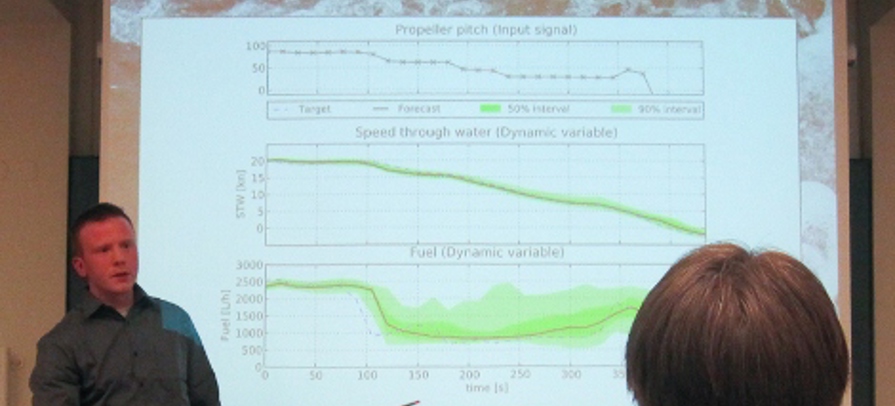Jóan Petur Petersen vart ph.d. við DTU
Mikudagin 7. mars 2012 vardi Jóan Petur Petersen ph.d. arbeiði sítt við DTU Informatics í Lyngby, Danmark. Heitið á ritgerðini er: "Mining of Ship Operation Data for Energy Conservation".
Vegleiðarar hava verið Ole Winther, lektari á DTU og Dánjal Jákup Jacobsen, sjóri á GreenSteam.
Í dómsnevndini vóru Jan Larsen, professari á DTU Informatics, Mattias Ohlsson, lektari við Lund University og Volker Bertram, professari, dr.Ing. frá FutureShip GmbH.
Jóan Petur Petersen hevur arbeitt hjá fyritøkuni GreenSteam (Fyrr Decision3) og verið innskrivaður við DTU Informatics. Talan er um eina vinnu ph.d.skipan, í Danmark kallað Erhvervs ph.d., har tað verður skipað samstarv millum eitt universitet og eina fyritøku.
Føroyagrunnurin hevur stuðlað verkætlanini við kr. 1.789.489, og Granskingargrunnurin hevur umsitið stuðulin í samsvari við samstarvsavtalu við Føroyagrunnin.
Les um Jóan Petur Petersen í Heilagrunninum.
Enskur samandráttur
This thesis presents two state-of-the-art systems approaches to statistical modelling of fuel efficiency in ship propulsion: a regression model and a dynamical model. Three statistical regression model approaches are investigated and compared: Artificial Neural Networks (ANN), Gaussian processes (GP), and Gaussian Mixture Models (GMM). A dynamical modelling approach is introduced. This modelling approach has not been used before in the context of ship propulsion modelling, and solves problems encountered with the regression model in an onboard trim optimization application. The dynamical model is introduces through a study of the wellknown sunspot time series, and then on ship data. The dynamical modelling approach is investigated using both the Artificial Neural Network and the Gaussian mixture model. The thesis also presentes a novel and publicly available data set of high quality sensory data on which all the models are based and tested. No other similar publicly available data set exists. The data presented is a publicly available full-scale data set, with a whole range of features sampled over a period of 2 months. The data is online with an accompanying homepage, where all the results are also presented.
